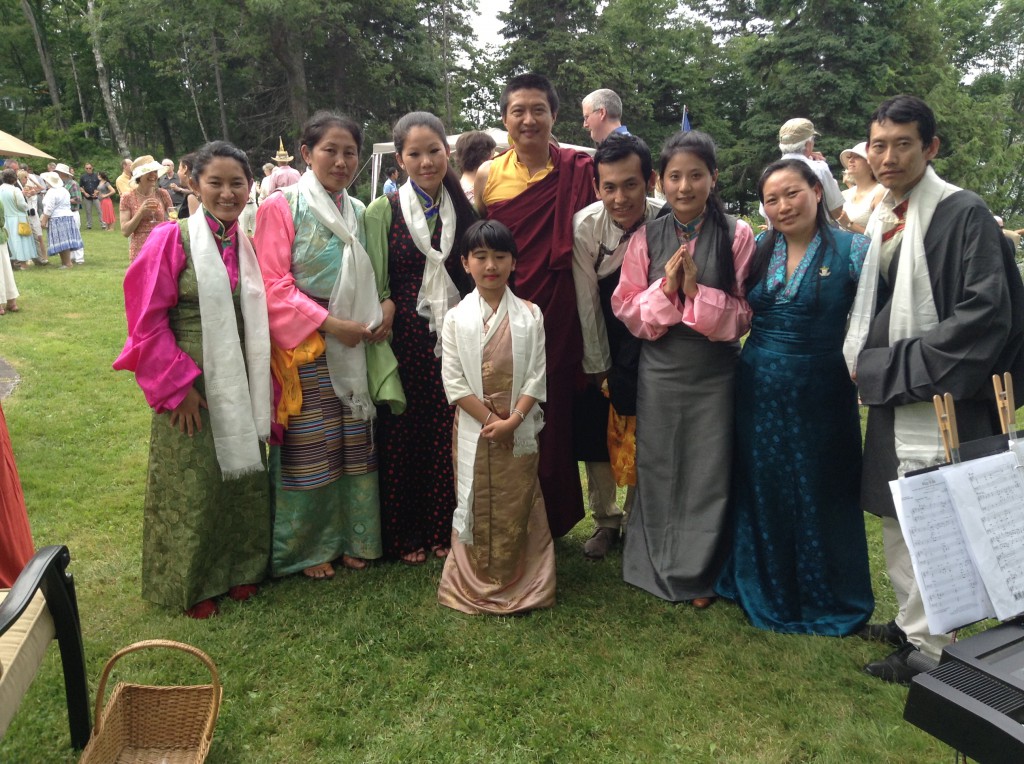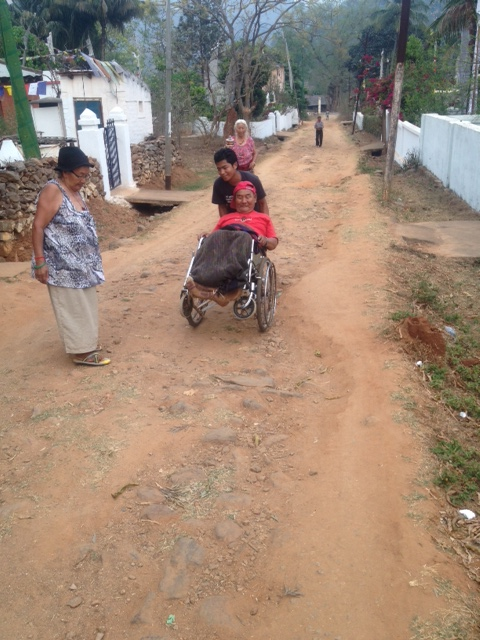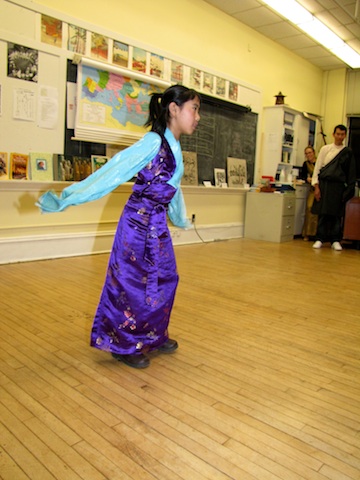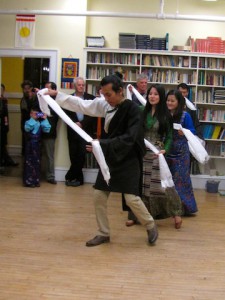The Birth of the Shambhala Ripa Tibetan Cultural Society
By Rinzin Ngodup
It all started in Tibet before the Chinese invasion of Tibet. My forefathers were very devoted disciples of Ripa Labrang and had high deference to their teachings, since then we are inseparable, so strong that not even the ammunitions of red army could break our relationship. After fleeing Tibet, my grandfather and father had to start their living from nothing, settled in the most remote part of India. They built their livelihood in these unimaginable conditions, but they were strong emotionally and physically.
My dad tells me all the time that the hard work we incur now is far less that what he and other Tibetans had to go through when they first came to India. He lost his two elder brothers and mother to tropical diseases which were unknown in Tibet, but they were determined and somewhat content that they were going to be close to our root guru Ripa Labrang and our spiritual leader His Holiness The Dalai Lama. Tears roll down from dad when he reminisces about those days and he is very happy that his children don’t have to go through these same things.
This isn’t just a story of my family, but the story of general Tibetans who had to flee Tibet like my father and grandfather did. My parents remind me of how to be grateful of His Holiness The Dalai Lama and of Ripa Labrang, which I heartily acknowledge without doubt in mind.
It was in sometime in 2008, I received a call from dad and told me that Gyetrul Jigme Rinpoche wanted to meet me in Delhi. There I with other seven Ripa sanghas, were told that we were the fortunate ones, moving to Halifax, Canada. Rinpoche introduced us to Tom Bell during that meeting who was going to take care of documents and other necessary things for immigration. We were educated about the origin of the Shambhala organization and the reasons behind our immigration to Halifax. There we were told how the brave and devoted Shambhala Sangha moved to Nova Scotia in the 1980s to be with their guru, Chogyam Trungpa Rinpoche.
To be honest, I had not heard about Trungpa Rinpoche then, but after a Google in Internet, I came to know about his success and his teachings in west. Gyetrul Jigme Rinpoche further added the reasons behind our immigration. The idea of having Tibetans in Halifax, started when Sakyong Mipham Rinpoche was betrothed to our Semo Tseyang who is now Sakyong Wangmo. The Sakyong Rinpoche felt that the Sakyong Wangmo would feel homesick in the midst of unknown people with different cultures in Halifax, which is the center of the Shambhala Organization. At the same time, the Sakyong Wangmo wanted to help her own people in Orissa who are economically weak. Most importantly His and Her Majesties wanted to have Tibetan culture brought to Halifax so that the Shambhala Sangha can connect with the Tibetan culture, which I believe, is root of the Shambhala organization at large.
So I immigrated to Halifax right after my university, it took me three years (similarly for my fellow Tibetans) to get my visa and, in the back of my mind, I knew that I would get it because they way Tom Bell and Kathryn Heckman meticulously filed our application was beyond our mind. We were amazed how discipline and devoted they are when it comes to responsibilities. On top of that we have a blessing from our root guru His Eminence Namkha Drimed Rinpoche and Gyetrul Jigme Rinpoche and their family and the support of the Sakyong and Sakyong Wangmo
Now after more than four years, almost everyone is here in Halifax. There are nine of us including one family, have settled. Like other immigrants, we had our share of adjustments, but we have been receiving lots of help and support from local sangha, for that we are humble and grateful.
Need of a society popped up during Gyetrul Jigme Rinpoche’s visit to Halifax in Oct., 2012. We invited Rinpoche for dinner and after our initial formal teaching, Rinpoche told us that we needed to form an association or society to relieve some works of Tom Bell who have been handling everything since 2008. We agreed to form a society and unanimously decided that I be a representative of the society which was later named by Sakyong Mipham Rinpoche as “Shambhala Ripa Tibetan Cultural Society (SRTCS)”.
Since 2012, we have attended numerous functions and presented our cultural dance even though none of us are trained dancer. Formation of SRTCS is a sign of prelude for next generation to come and we will continue to present whatever we have learned from our parents and Tibetan society in large and will continue to learn from Sangha.






Thank you Rinzin, for sharing this story. It’s great to have you in Halifax!
We are so happy you are here and hope you feel welcome. You truly enrich our sangha and the Halifax community.
Thank you for sharing your story. Is there anyway to contact you personally Rinzin? Or does anyone have information to be able to contact Rinzin, it would be lovely.
Thank you all so much.